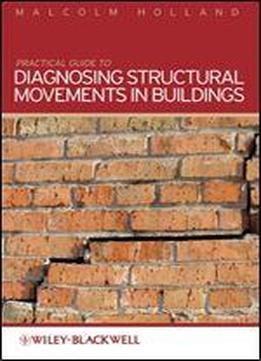
Practical Guide To Diagnosing Structural Movement In Buildings
by Malcolm Holland /
2012 / English / PDF
30.1 MB Download
"What's the Crack?" When cracking is observed in a building the most commonreaction is that it must be the foundations and that it must beserious. Many surveyors are nervous about diagnosing cracks. This isunderstandable, as the interpretation of cracks can be difficult toteach, with university courses providing little or no time forfield experience. Yet by understanding one straightforwardprinciple the majority of cracks can be diagnosed in just a fewminutes. Linking this with a good knowledge of constructiontechniques, the factors that distort cracking patterns and the keyfeatures of common causes of cracking, almost all cracks can bediagnosed quickly and with confidence. Practical Guide to Diagnosing Structural Movement inBuildings provides a methodology by which cracks and movementin buildings can be diagnosed. Written in four parts, part onedescribes the key principles of movement and cracking. Parts twoand three describe the main features of common forms of movementand the associated crack patterns. Part two covers causes otherthan ground or foundation movement and part three covers movementcaused by ground or foundation problems. Part four brieflydescribes the techniques used to arrest further movement or repairdamage cause by movement. Primarily intended for the relatively inexperienced surveyor orengineer and undergraduate students of surveying as a practicalguide for use on site, it focuses on identification and diagnosis.It will not only help in correctly diagnosing the problem but itwill also demonstrate a methodical approach to show and record howthe diagnosis was reached critical when giving advice tothird parties. "What's the crack?" - In the vast majority of cases it's notfoundation related and in most cases it's not indicating a seriousdefect.











